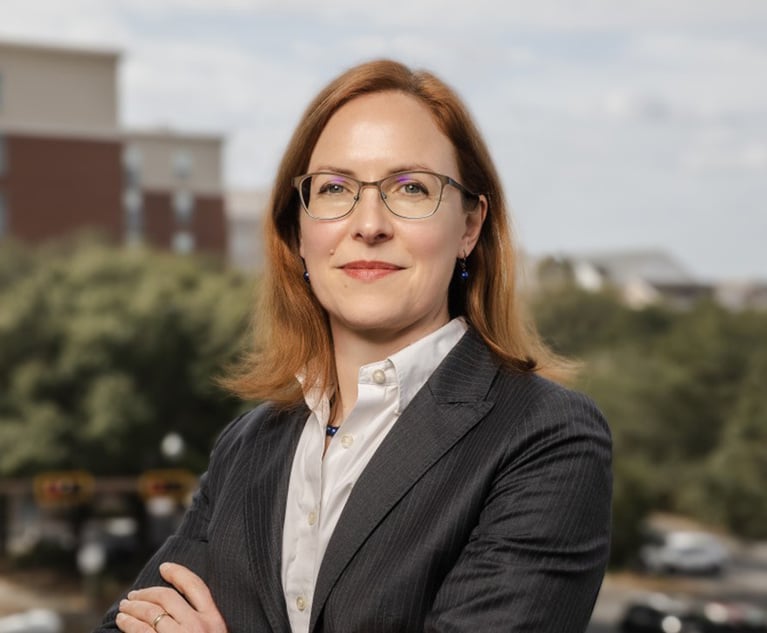Difficult Business Insurance Market Meets COVID-19
The impact of COVID-19 has put more pressure on insurers, and created a difficult environment for businesses that utilize commercial insurance to manage risk and grow.
July 24, 2020 at 08:23 AM
5 minute read
 Gary Reshefsky, left, and David Josefsberg, right, of Century Risk Advisors.
Gary Reshefsky, left, and David Josefsberg, right, of Century Risk Advisors.
What is happening in today's insurance marketplace and how is it being affected by the pandemic? Entering 2020, the cost and availability of insurance experienced hard market conditions. The 10-year run in premium reductions for corporate property and casualty insurance ended. Premiums increased and coverage restrictions were common. Inflation of claim settlements and the costs of reinsurance required underwriters to be much more disciplined than in past years. Insurance buyers could expect 20%-50% increases in pricing. Premium increases were not meaningful for many businesses that experienced substantial revenue growth over the last 10 years.
Prior to the pandemic, the general consensus was that 2020 would conclude with stabilization in the insurance market as additional capital flowed in. However, the impact of COVID-19 has put more pressure on insurers, and created a difficult environment for businesses that utilize commercial insurance to manage risk and grow.
During the 2nd quarter of 2020, businesses saw a small reprieve in the cost of insurance. As businesses reduced operations due to COVID, insurers collected less premium since most insurance is priced on payroll or sales. Buyers of Group Health insurance, all too familiar with annual premium increases and reductions in coverage, experienced more flexibility from insurers. The reduction of employers and employees paying into the system provided buyers with more leverage to negotiate better terms from carriers. Health insurance carriers made accommodations to hold on to existing customers. With elective procedures and in-person doctor visits severely minimized over the last 90 days, the cost to provide coverage is being returned to employers.
However, at the mid-point of 2020, insurers experienced very difficult renewals of their reinsurance contracts. This means that insurers have more restrictions on the types of coverages they can offer their customers, types of industries they can underwrite, and how much capacity or limits they can offer. It all means a reduction in the number of customers they will insure, higher deductibles and higher premiums.
Industry estimates of COVID related insurance claims exceed $80 Billion. Bottom line is that buyers of insurance will experience hard market conditions for the balance of 2020 and well into 2021.
The length of this article will not permit a granular explanation of every line of coverage, but major lines affected include:
Property insurance premiums are increasing regardless of construction quality. Insurers are tightening coverage terms to provide greater certainty on communicable disease exclusions, and taking a hard look that properties are insured for true replacement cost.
Excess liability insurance that businesses have historically bought to protect their balance sheets are difficult to procure. Most insurers no longer offer $25 million excess general liability policies. Instead, insurers are maximizing their policies at $10 million, and many are requiring primary general liability occurrence coverage to be $2 million instead of $1 million. Businesses seeking to maintain high limit coverage will pay double for lower limits. Brokers are piecing coverage together from multiple insurers sharing the risk.
Directors and Officers ("D&O") coverage purchased by businesses to provide personal protection to their boards and management teams are seeing both premium and deductible increases. Public companies of all sizes can expect a $1 million deductible before coverage for the entity kicks in. New conditions are being added to restrict coverage. The D&O market was difficult before the pandemic. The distress that many businesses are experiencing caused by the economic slowdown are expected to give rise to increased shareholder claims.
Employment Practices Liability Insurance claims have increased. Employment suits alleging discrimination or unfair work from home/leave treatment have grown exponentially in recent weeks. Many of these claims are in the form of Class Action.
More disruption could occur if courts interpret that COVID related business interruption losses meet the definition of property damage. Pandemic liability claims going through the judicial process may or may not be minimized by Federal legislation. Many states have determined that COVID is a compensable workers compensation injury. Public/private solutions may also be developed to provide coverage for future pandemics. These will be similar to the Terrorism program that developed after 9/11 or the federal flood insurance program.
Just like the corporate veil provides entrepreneurs with the ability to minimize risk, business insurance provides a similar role. The spread of risk among many, allows coverage to be offered at costs that business can afford. Overall, the commercial insurance market is well capitalized to withstand claims. It is also a market that will stabilize over time as more investors add capital.
At a time where businesses are trying to conserve cash to weather the pandemic, increased insurance costs are very material. It is important for businesses to quantify their risks through consultation with their insurance broker, as well as meetings with underwriters. Much of this consultation is occurring over video. Underwriters are accessible and have made accommodations for clients where possible. Businesses are well served by brokers that truly understand their client's needs.
Gary Reshefsky is an attorney and president of Century Risk Advisors in Boca Raton, an independent insurance agency serving South Florida. Contact him at [email protected]. David Josefsberg is a partner with Century Risk Advisors. Contact him at [email protected].
This content has been archived. It is available through our partners, LexisNexis® and Bloomberg Law.
To view this content, please continue to their sites.
Not a Lexis Subscriber?
Subscribe Now
Not a Bloomberg Law Subscriber?
Subscribe Now
NOT FOR REPRINT
© 2025 ALM Global, LLC, All Rights Reserved. Request academic re-use from www.copyright.com. All other uses, submit a request to [email protected]. For more information visit Asset & Logo Licensing.
You Might Like
View All
Essential Labor Shifts: Navigating Noncompetes, Workplace Politics and the AI Revolution

Initial Steps to Set Up a Fla. Appeal: Your Future Self (or Appellate Attorney) Will Thank You
6 minute read
Divorce Timing Is Everything: Waiting for the New Year May Have Its Advantages
4 minute read
Motions for Summary Judgment and Discovery: The 2021 Rule Changes Continue to Emerge
5 minute readTrending Stories
- 1Tuesday Newspaper
- 2Public Notices/Calendars
- 3Judicial Ethics Opinion 24-99
- 4Decision of the Day: NYPD Officer's Sexual Assault of Informant Occurred Outside Scope of Employment
- 5'Not the President's Personal Lawyer': Lawyers Share Concerns Over How AG Pick Bondi’s Loyalism to Trump May Impact DOJ






